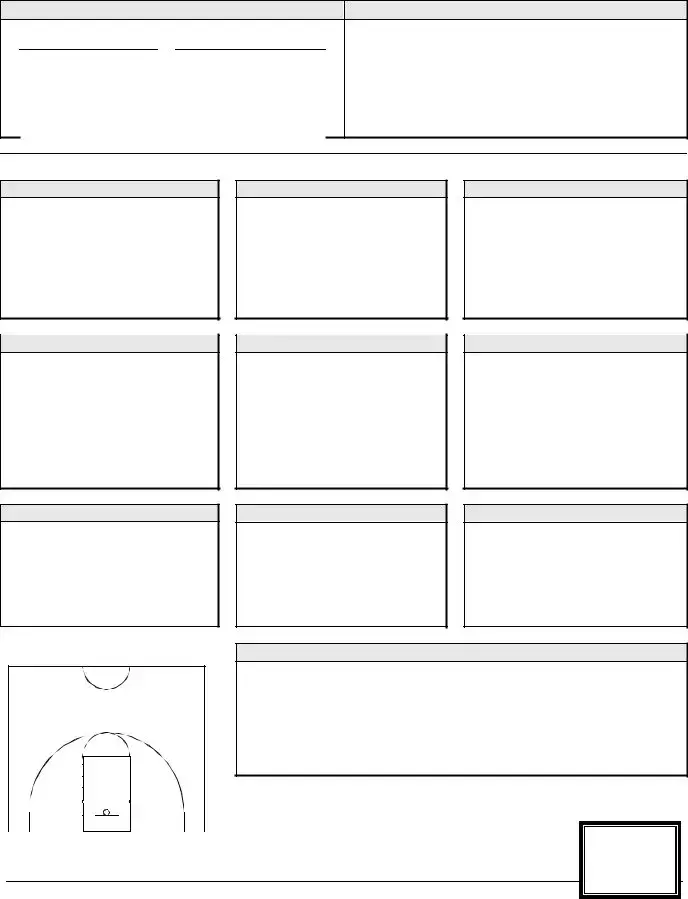The Basketball Evaluation form serves as a comprehensive tool designed to assess a player's skills and overall performance on the court. This structured evaluation encompasses various categories, including shooting, defense, dribbling, rebounding, passing, and athletic ability. Each category is broken down into specific skills, allowing evaluators to assign ratings on a scale from one to five, where one indicates a need for improvement and five signifies outstanding performance. Additional sections focus on game play, coachability, and overall strengths, offering a holistic view of the player's capabilities. The form also encourages evaluators to provide comments and recommendations, enhancing the feedback process. Furthermore, it includes unique symbols to indicate where a player may excel on offense or defense, ensuring that the evaluation is both detailed and actionable. By utilizing this form, coaches and evaluators can make informed decisions about player development and team strategy, ultimately fostering a more effective basketball program.

